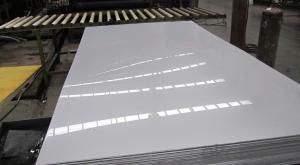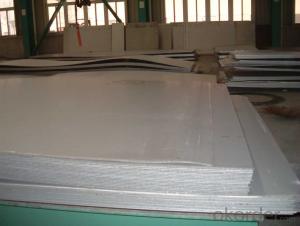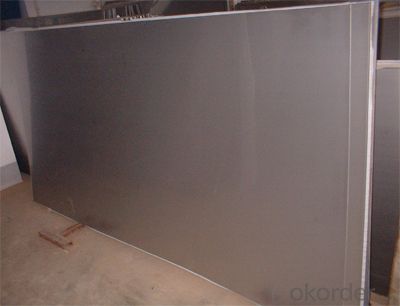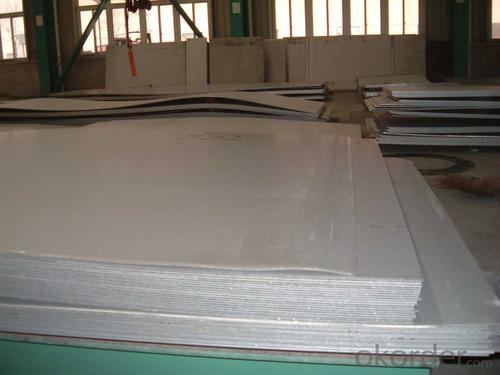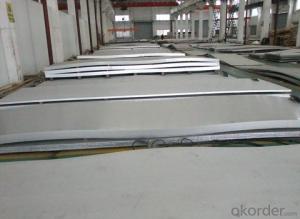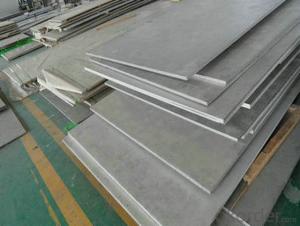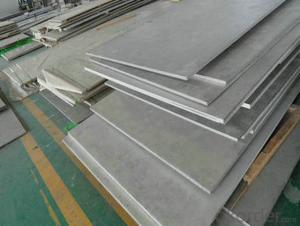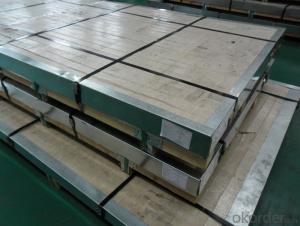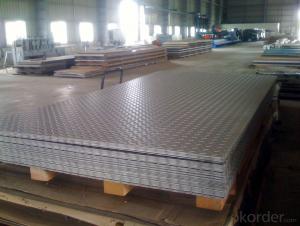Stainless Steel sheet 904L with No.4 Surface Treatment
- Loading Port:
- Shanghai
- Payment Terms:
- TT OR LC
- Min Order Qty:
- 500 m.t.
- Supply Capability:
- 5000000 m.t./month
OKorder Service Pledge
OKorder Financial Service
You Might Also Like
Hot sale stainless steel sheet 201/202/304/304l/310S/309S/316L/316Ti/316/316l/321,410/420/430/444/443/409L, and 904L.
Description of Stainless Steel Sheet:
Description | steel sheet,hot rolled steel sheet,cold rolled steel sheet, steel sheet,sheet,steel plate |
Standard | ASME, ASTM, EN ,BS,GB,DIN, JIS etc |
Application | Steel sheet applies to construction field, ships building industry, petroleum & chemical industries, war and electricity industries, food processing and medical industry, boiler heat exchanger, machinery and hardware fields. |
Packaging | Standard export sea-worthy packing |
Delivery time | 10-30 days |
Quality | No.1 |
Productivity | 500 tons/Day |
Note | Our company has cooperative relation between the domestic agents. Stainless steel sheet can be made accordingto the customers requirements. Fasten delivery. Quality assured. |
Contacts | If you have any question,please feel free contact me. |
Stainless steel sheet surface finish characteristics
Surface finish | Characteristics and application |
2B | The surface brightness and flatness of no2B is better than no2D. then through a special surface treatment to improve its mechanical properties,No2B could nearly satisfy comprehensive uses. |
No.1 | Polished with abrasive belt of grit#100-#200, have better brightness with discontinuous coarse stria, used as inner and external ornaments for building, electrical appliances and kitchen utensils etc. |
No.4 | Polished with abrasive belt of grit #150-#180,have better brightness with discontinuous coarse stria, but thinner than No3, are used as bathtub buildings inner and external ornaments electrical appliances kitchen utensils and food processing equipment etc. |
HL | Polished with abrasive belt of grit #150-#320 on the NO.4 finish and has continuous streaks, mainly used as buildings ornaments elevators, door of building, frontal plate etc. |
BA | Cold rolled, bright annealed and skin-passed, the product have excellent brightness and good reflexivity like mirror, kitchen apparatus, ornament etc. |
8K | The product have excellent brightness and prefer reflexivity can to be the mirror. |
Main Features of stainless steel sheet :
•Escalator, Elevator, Doors
•Furniture
•Production tools, Kitchen appliances, freezers, cold rooms
•Auto Parts
•Machinery and Packaging
•Equipment and Medical devices
•Transport system
Product Details:
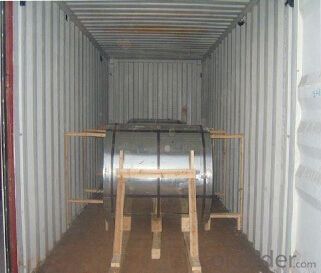
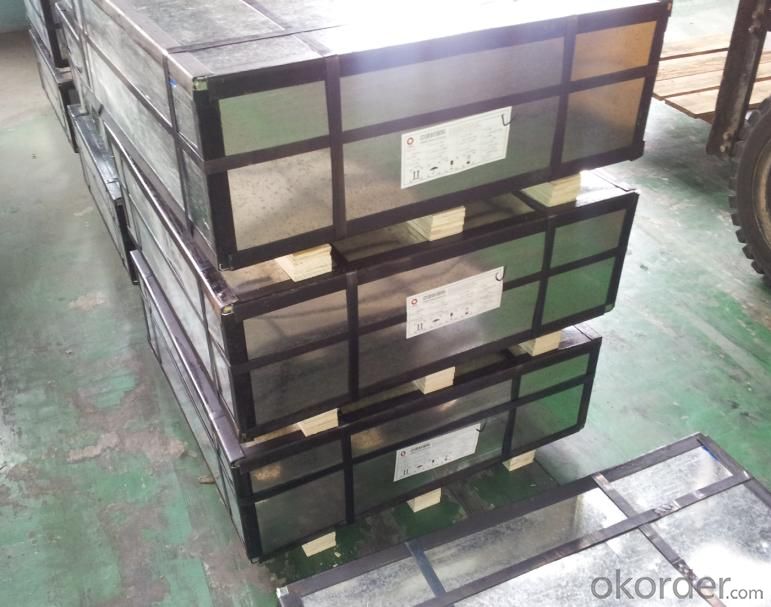
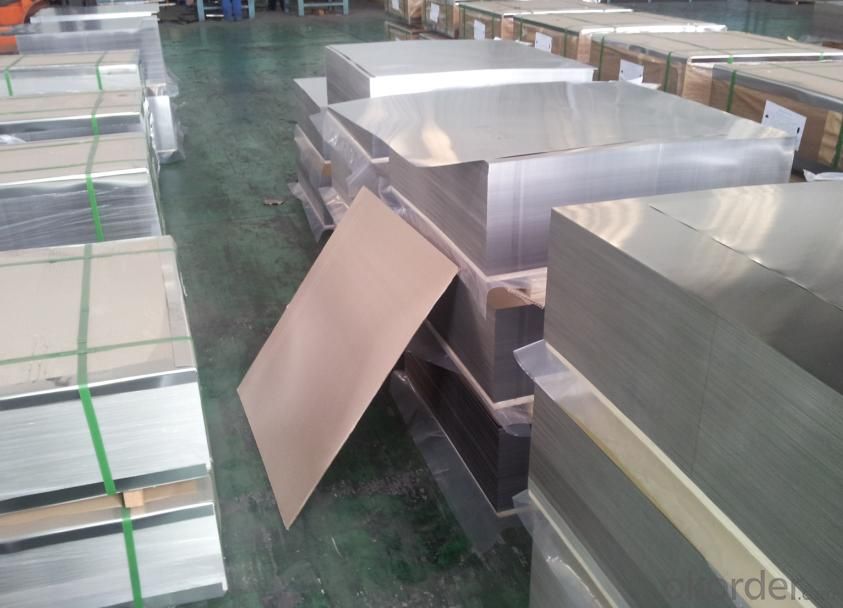
Sandard Seaworth Packing(wooden packing with water proof paper)
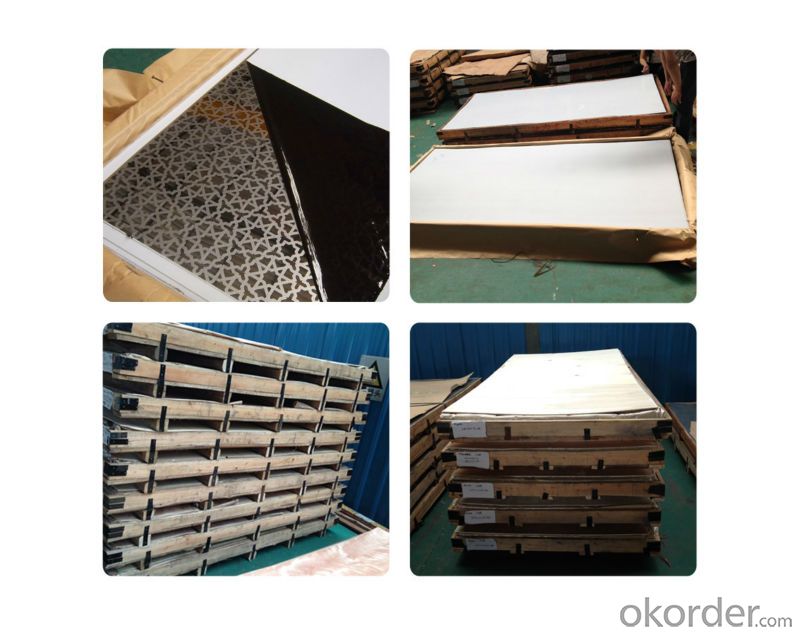
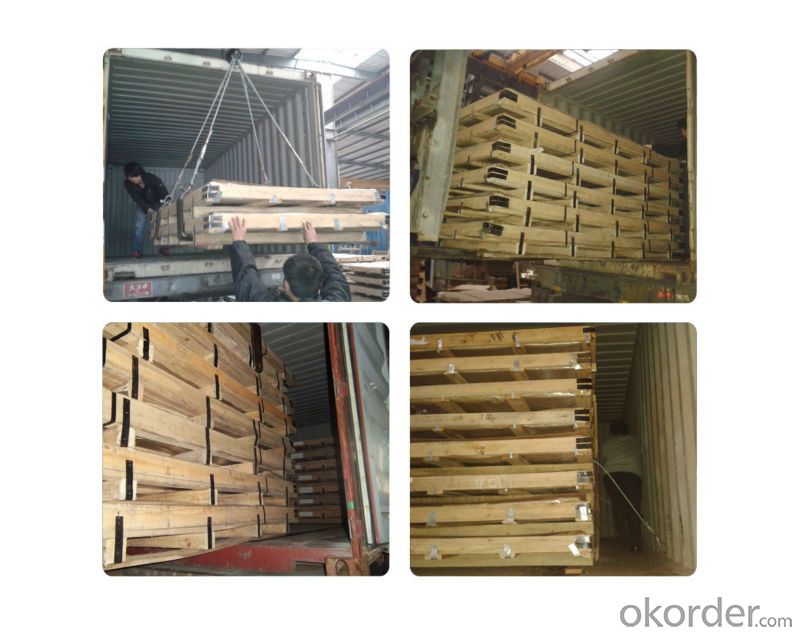
FAQ:
1. What's the quality?
very fine
2. How long get reply?
within 24 hours
If you have any question about stainless steel sheets,donot forget to sending the email to Us! You will get the competitive Price and have a very good experience about the Buying Process! CNBM International Corporation is always your trustful friend!
- Q: Are stainless steel sheets suitable for architectural column covers or cladding?
- Architectural column covers or cladding can be effectively achieved using stainless steel sheets. This material is highly durable and resistant to corrosion, making it an ideal choice for outdoor applications. It can withstand various weather conditions without deteriorating or rusting. Furthermore, stainless steel provides a sleek and modern look, improving the overall appearance of the building. In addition, architects and designers can easily fabricate and install stainless steel sheets, allowing for a wide range of design options. Overall, stainless steel sheets are an outstanding choice for architectural column covers or cladding due to their durability, resistance to corrosion, aesthetic appeal, and ease of installation.
- Q: What are the benefits of using brushed stainless steel sheets?
- Using brushed stainless steel sheets has several advantages. To begin with, their sleek and attractive appearance makes them a popular choice for appliances, countertops, and backsplashes. The brushed finish adds a unique texture and matte appearance, bringing sophistication to any space. Additionally, brushed stainless steel sheets are highly durable and resistant to corrosion, making them suitable for indoor and outdoor use. They can withstand harsh conditions such as chemicals, moisture, and extreme temperatures. Moreover, their brushed finish helps to hide fingerprints, smudges, and scratches, making them easy to clean and maintain. Furthermore, brushed stainless steel sheets are hygienic and inhibit bacteria growth, making them ideal for the food and medical industries. Their smooth surface allows for easy cleaning and disinfection, ensuring a safe and sanitary environment. Moreover, these sheets offer excellent longevity and are a cost-effective investment. They resist wear and tear, maintaining their appearance for many years without the need for replacement. Lastly, brushed stainless steel sheets are versatile and can be customized to fit different design preferences. They can be easily cut, shaped, and formed into various sizes and shapes, allowing for endless design possibilities. Whether you prefer a modern, industrial look or a more traditional and elegant style, brushed stainless steel sheets can be tailored to meet your specific needs. In conclusion, the use of brushed stainless steel sheets offers benefits such as an attractive appearance, durability, corrosion resistance, hygienic properties, longevity, and versatility. Whether used in residential, commercial, or industrial settings, these sheets provide a wide range of advantages, making them a popular choice for various applications.
- Q: Can stainless steel sheets be used in food processing industries?
- Yes, stainless steel sheets are commonly used in food processing industries due to their excellent corrosion resistance, hygiene, and durability. The smooth and non-porous surface of stainless steel makes it easy to clean and maintain, ensuring sanitary conditions. Additionally, stainless steel is resistant to chemicals and can withstand high temperatures, making it suitable for various food processing applications such as equipment, storage tanks, and work surfaces.
- Q: How do you remove adhesive residue from stainless steel sheets?
- To remove adhesive residue from stainless steel sheets, you can follow these steps: 1. Start by gently scraping off as much of the residue as possible using a plastic scraper or your fingernail. Be careful not to scratch the stainless steel surface. 2. Next, dampen a soft cloth with warm water and mild detergent or dish soap. Gently scrub the adhesive residue using circular motions. Avoid using abrasive cleaners or scrub brushes as they can damage the stainless steel finish. 3. If the adhesive residue persists, you can try using a non-abrasive cleaner specifically designed for stainless steel. Apply a small amount of the cleaner to a soft cloth and gently rub the residue until it lifts off. 4. For stubborn adhesive residue, you can make a paste using baking soda and water. Apply the paste to the affected area and let it sit for a few minutes. Then, use a soft cloth to gently scrub off the residue in circular motions. 5. Rinse the stainless steel sheet thoroughly with warm water to remove any remaining residue or cleaner. 6. Finally, dry the surface with a clean, soft cloth to prevent water spots and streaks. Remember to always test any cleaning method or product on a small, inconspicuous area of the stainless steel sheet before applying it to the entire surface. This will ensure that it doesn't cause any damage or discoloration.
- Q: Are stainless steel sheets good for exhaust systems?
- Yes, stainless steel sheets are excellent for exhaust systems. Stainless steel is a popular choice for exhaust system materials due to its high resistance to corrosion, heat, and pressure. It can withstand the extreme temperatures and harsh conditions that exhaust systems are exposed to, ensuring durability and longevity. Stainless steel also has excellent acoustic properties, helping to reduce noise levels. Additionally, stainless steel sheets can be easily formed and welded, allowing for the creation of customized exhaust system designs. Overall, stainless steel sheets are a reliable and efficient material for exhaust systems in terms of performance, aesthetics, and overall functionality.
- Q: Are stainless steel sheets suitable for architectural facades?
- Yes, stainless steel sheets are highly suitable for architectural facades. Stainless steel is a versatile and durable material that offers several advantages when used in architectural applications. One of the main reasons stainless steel sheets are suitable for facades is their aesthetic appeal. Stainless steel has a sleek and modern look that can enhance the overall appearance of a building. It can be finished in various ways, such as brushed, mirrored, or patterned, allowing architects to achieve the desired design aesthetic. In addition to its visual appeal, stainless steel is also highly resistant to corrosion. This makes it ideal for outdoor applications, as it can withstand exposure to harsh weather conditions, pollution, and other environmental factors without deteriorating. Stainless steel's corrosion resistance also means that it requires minimal maintenance, reducing long-term costs and efforts associated with facade upkeep. Another advantage of stainless steel sheets for architectural facades is their strength and durability. Stainless steel is a strong material that can withstand impact, making it suitable for high-traffic areas or buildings located in areas prone to severe weather events. It is also resistant to staining, scratching, and fading, ensuring that the facade remains attractive and intact for an extended period. Additionally, stainless steel is a sustainable material choice for architectural facades. It is 100% recyclable and can be reused without losing its properties, making it an environmentally friendly option. Stainless steel's longevity also contributes to sustainability, as it reduces the need for frequent replacements over time. Overall, stainless steel sheets are a highly suitable choice for architectural facades due to their aesthetic appeal, corrosion resistance, strength, durability, and sustainability. Whether used in modern or traditional designs, stainless steel can provide a long-lasting and visually pleasing solution for enhancing the exterior of buildings.
- Q: What is the function of a stainless steel plate at the top of the steel chimney?
- Many stainless steel grades, different properties, and in the course of its development has gradually formed several categories. According to the structure of the organization, it is divided into four categories: martensitic stainless steel (including precipitation hardening stainless steel), ferritic stainless steel, austenitic stainless steel and austenitic ferrite duplex stainless steel;
- Q: Can stainless steel sheets be used in architectural designs?
- Yes, stainless steel sheets can be used in architectural designs. Stainless steel is a versatile material that offers durability, strength, and a sleek aesthetic appeal, making it suitable for various architectural applications such as cladding, roofing, and decorative elements. Its corrosion-resistant properties ensure longevity, while its ability to be shaped and fabricated allows for creative and intricate designs.
- Q: Can stainless steel sheets be used for storage tanks?
- Yes, stainless steel sheets can indeed be used for storage tanks. Stainless steel is known for its high corrosion resistance, making it an ideal material for storing various substances, including chemicals, liquids, and gases. It is highly durable, which ensures a longer lifespan for the storage tank and reduces the risk of leaks or contamination. Stainless steel tanks are also easy to clean and maintain, making them suitable for industries such as food and beverage, pharmaceuticals, and wastewater treatment. Additionally, stainless steel is non-reactive, meaning it does not interact with the stored substances, ensuring the integrity and quality of the materials being stored. Overall, stainless steel sheets are a reliable and versatile choice for storage tank applications.
- Q: Can stainless steel sheets be used for architectural columns?
- Yes, stainless steel sheets can be used for architectural columns. Stainless steel is a highly durable and versatile material that offers excellent resistance to corrosion, making it suitable for both indoor and outdoor applications. The sleek and modern appearance of stainless steel also adds an aesthetic appeal to architectural designs. Additionally, stainless steel sheets can be customized to various sizes and shapes, allowing for flexibility in column design. Whether it is for residential, commercial, or industrial projects, stainless steel sheets are a popular choice for architectural columns due to their strength, longevity, and visual appeal.
Send your message to us
Stainless Steel sheet 904L with No.4 Surface Treatment
- Loading Port:
- Shanghai
- Payment Terms:
- TT OR LC
- Min Order Qty:
- 500 m.t.
- Supply Capability:
- 5000000 m.t./month
OKorder Service Pledge
OKorder Financial Service
Similar products
Hot products
Hot Searches
Related keywords



